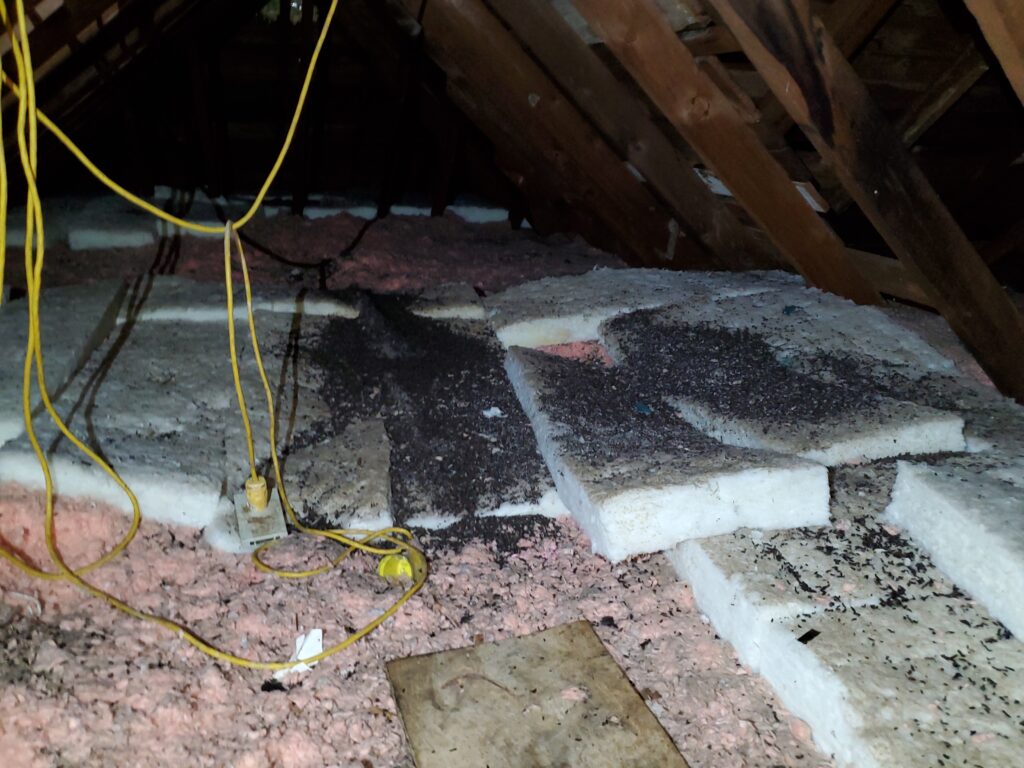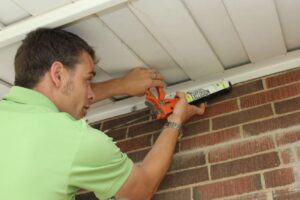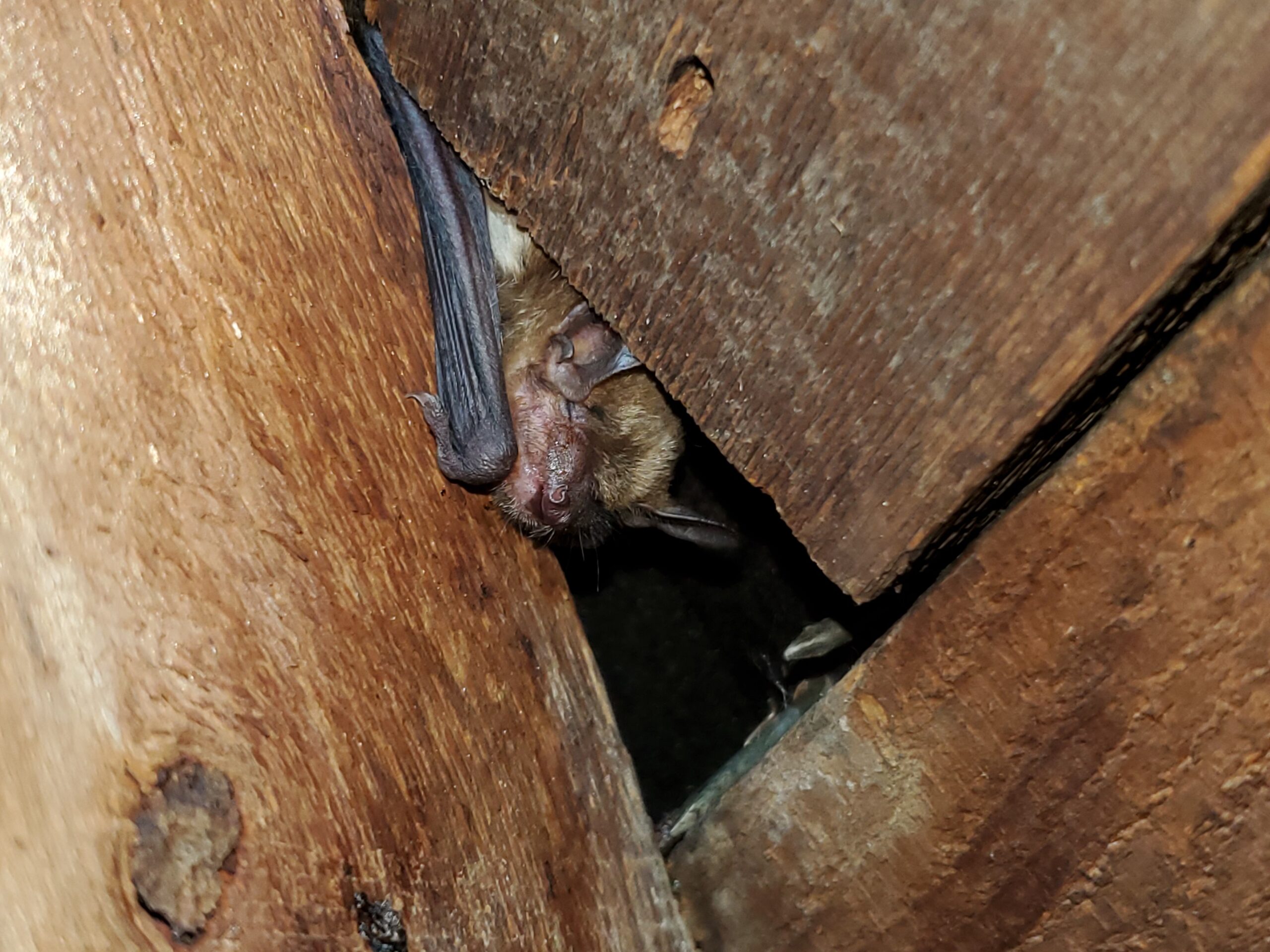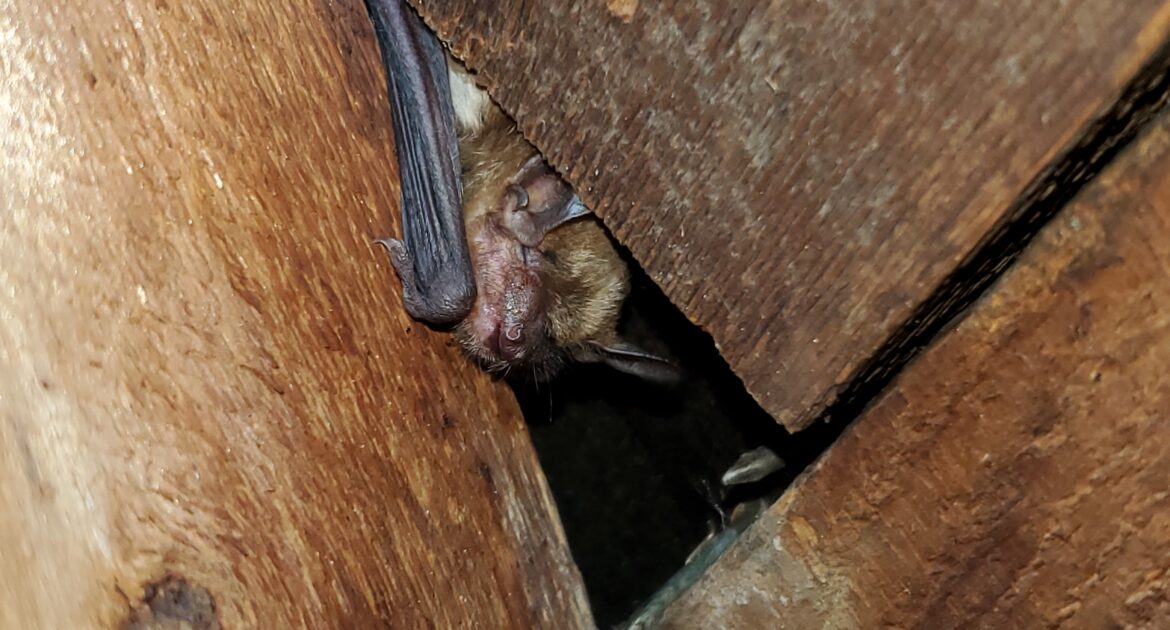Bats play a vital role in our ecosystem by serving important functions for the health of our biosphere, but they don’t make great houseguests. These shy and industrious creatures can cause a significant amount of damage if they take up residence in your attic or another part of your home.
Bats produce a lot of waste that can be harmful to humans and does damage to the structural elements of homes. While bats mean no harm, the size of their colonies spells trouble for homeowners who find heaping piles of guano in their attics. Professional bat removal services are necessary if you spot these animals hanging around your house.
What Are the Signs of Bat Damage?
Bats do damage through their prolific production of waste. A single bat poops up to 30 times each day. Over a year, a bat poops around 10,000 times. While sizes vary, bat colonies range from 20 to 300 animals. That adds up to a lot of guano. Additionally, bat urine is a problem as colonies grow. Here are some ways bats do damage inside your home.
Decay
A colony of bats urinating and defecating inside your house adds up to a serious problem. Bat waste tends to remain wet and heavy, so as it lays on wood structures in your attic the process of decay begins.
If you rarely access your attic, this means damage may go unnoticed for years. Even a small colony causes damage if the waste is concentrated. Bats will move around the attic for better accommodations spreading their waste throughout.
Odour
Bat urine smells like ammonia. A small colony may not be noticeable, but when an area becomes saturated the stink is overwhelming. If you smell a strong odour that you can’t identify and hear scratching or screeching sounds in the attic, call our team for a professional assessment.
Stains
Bat urine is seen on walls as it leaks down from attics. It is an oily substance that leaves streaks on walls and spots on ceilings that are saturated from above. Bat guano stains walls and ceilings and has an acrid smell. Stains are usually a sign of infestation. A large pile of guano is easy to spot as it covers an attic floor or insulation.

Corrosion
Bat urine is a caustic substance. The uric acid corrodes metal and compromises wood and other permeable materials, which could become a major issue to your home’s structural integrity.
How Is a Home’s Structure Compromised by Bats?
Bats are not naturally destructive creatures, but their waste is another issue. The guano produced by a bat colony has the potential to damage wooden support beams by both decay and weight. Guano is also a problem as it burdens drywall and ruins insulation.
Bat urine eats away at all types of material due to its acidic nature. It also saturates materials and weakens their structural integrity. It makes wood fibres expand and disintegrate. It also etches durable surfaces, such as marble and glass. If your home has a bat colony residing in it, you may need considerable repairs or renovations to areas damaged by bat waste.
Is There a Way To Prevent Bat Entry?
Skedaddle has a team of experts that knows how to get the job done right. This is our three-step process:
- Assess and remove bats from your home in a humane, safe manner
- Clean and clear all waste produced by the bats
- Prevent and protect your home from future invasions
We use effective exclusion techniques to prevent bats from re-entry. Bats are protected species throughout Canada and US, and our process is designed to handle them with care while we protect you and your property.

Your Team for Humane Wildlife Removal and Exclusion
Humane wildlife control is essential because it is cost-effective, a long-term solution, a safe removal option for families and pets and an ethical choice.
Skedaddle Humane Wildlife Control is dedicated to customer service and the protection and preservation of wildlife. Learn more about our team and services.




